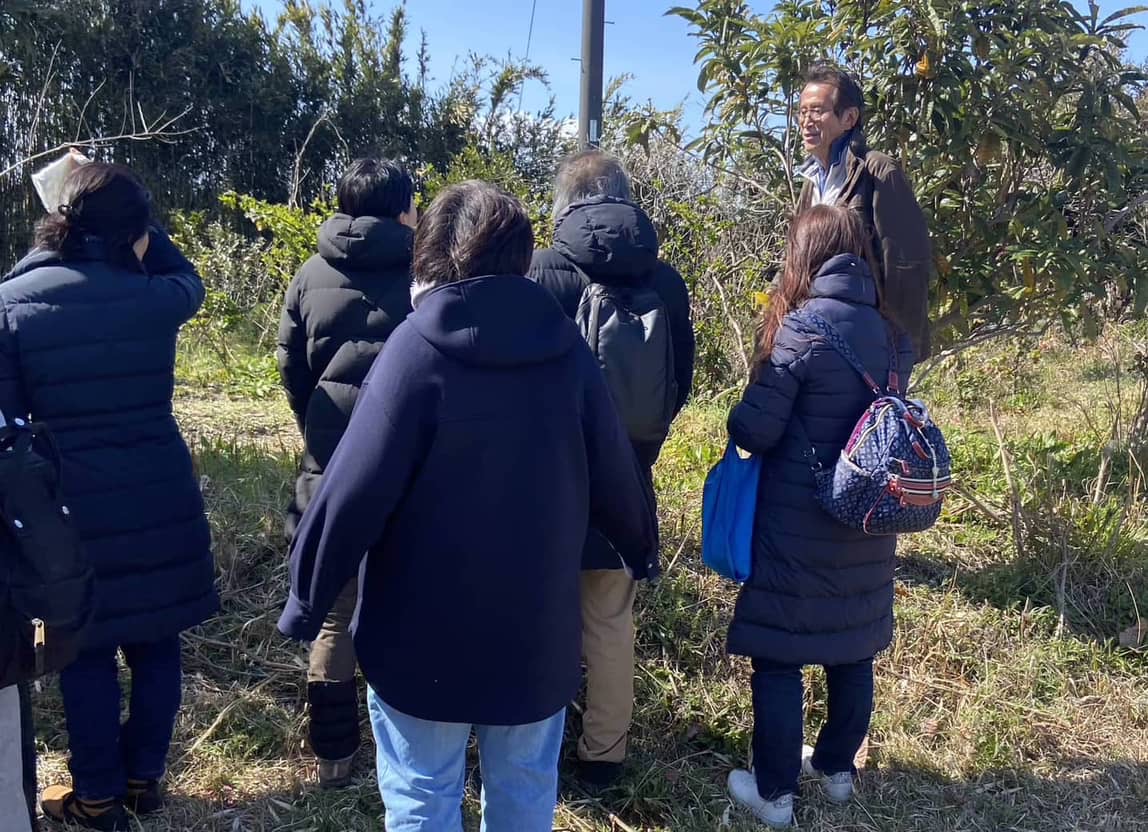
I had been considering farming since the beginning of 2024.
Suddenly, I stumbled upon a recommendation for a YouTube video about Kyousei Nouhou, Synecoculture farming, which had been featured on TV. However, this wasn’t enough for me to grasp it well, so I decided to meticulously read the articles on the blog, which have been uploaded every day for the past 15 years. Through this, I learned that it is theoretically possible to revitalize abandoned farmland. I became very interested in what could be achieved.
Organization for the Revitalization of Abandoned Agricultural Land
Project Objective
To revitalize abandoned farmlands, forests, and vacant lands by using the kyousei theory of farming, and to make them viable as a business, aiming for the revival of new agriculture, the expansion of employment, and the restoration of the environment.
Provide real food and water, and also restore physical condition and enrich people’s lives through the use of plants.
Food and health are inseparable. While I am not a farmer myself, I recognize the critical importance of agriculture. I am also one of those who are concerned about the future of agriculture in Japan.
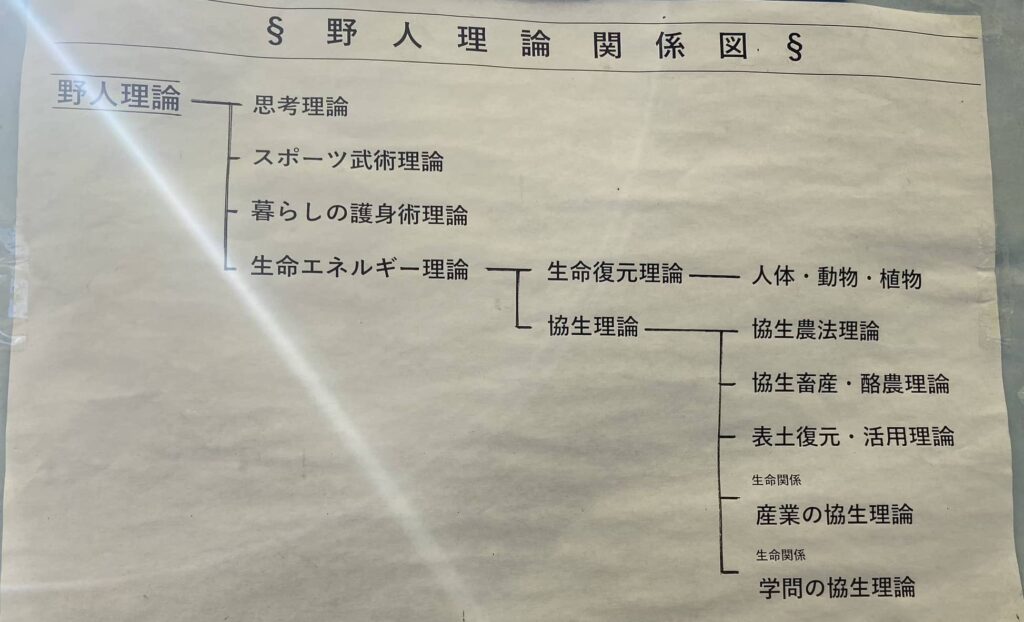
I traveled from Tokyo to Ise and stayed for two nights to attend a two-day course. Here is a summary of my understanding based on the materials I received that day.
Interpretation and understanding may differ from the original theory. For more details, please read the wild man essays.
We often take for granted the inevitability of falling ill, yet animals in the natural world are largely free from disease and infirmity. Their existence within the natural realm endows them with a robust natural healing capacity, enabling them to maintain a reasonable balance of both body and mind.
In contrast, humans often find themselves in a state where this healing power seems impaired—a deficiency in what can be termed ‘control energy’, necessary for activating the natural healing process. This deficiency, often coupled with incompleteness, leads to a loss of control. Organic matter possessing a perfect cellular balance is endowed with this essential control energy.
This control energy can be absorbed not only through the foods we consume but also through direct contact with our bodies, such as through bare feet and hands. Analogous to electricity, control energy can permeate the skin and be channeled into the body.
As previously mentioned, organisms with perfect cellular balance harbor the control energy necessary for activating the body’s natural healing powers. Thus, by consuming foods with such balance, we can regulate and replenish our control energy, thereby unleashing our innate healing abilities. So, what then are the ideal foods for consumption?
Organisms in perfect cellular balance include those found in nature, such as plants and wild animals. Wild animals, for instance, live in their natural habitats, consuming untouched, natural foods. Therefore, theoretically, consuming wild animal meat like wild boar or venison can contribute to restoring health. Despite potential difficulty in visually distinguishing between farmed and wild animals, there exists a significant cellular-level disparity between the two. This discrepancy also extends to fish.
Now, turning to plants, it is evident that they, like wild animals, should remain untouched by human intervention. In essence, wild plants harvested from remote mountainous regions, free from artificial additives or foreign substances, possess a perfect cellular balance.
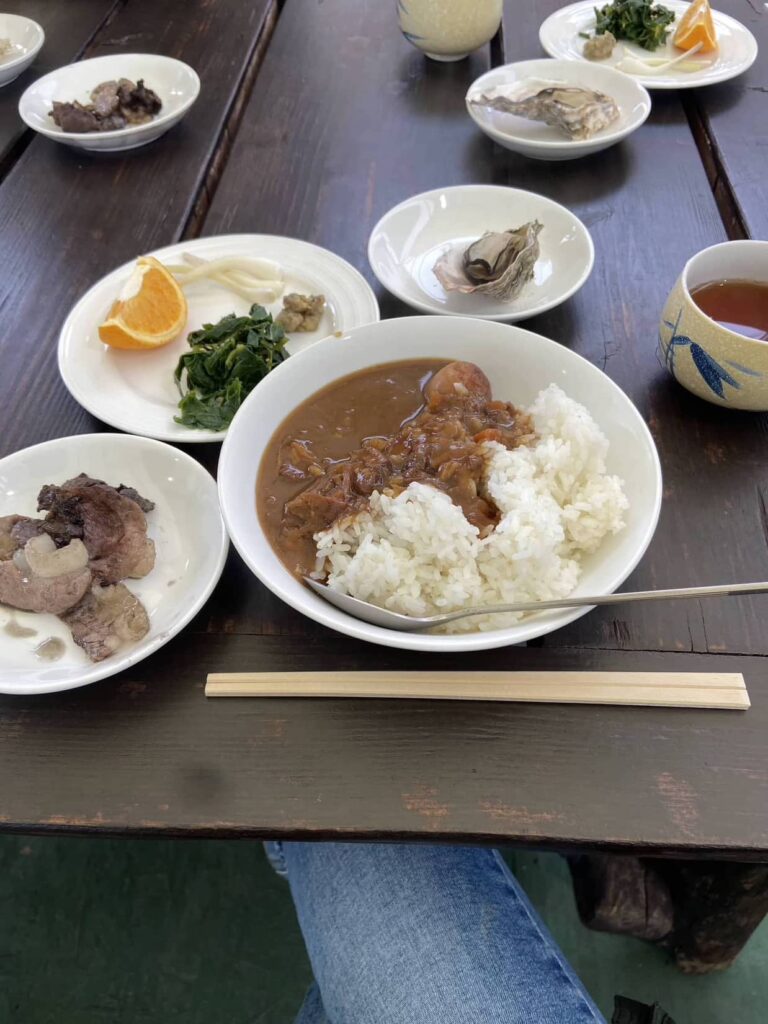
On the other hand, vegetables grown by humans, even those labeled as pesticide-free and organic, unfortunately lack a perfect cellular balance. Consequently, they lack the essential control energy required for activating the natural healing process. Despite efforts such as organic farming, natural farming, and natural agriculture, all these methods differ significantly from Synecoculture based on the principles of kyousei. The difference becomes evident when considering the energy quality of vegetables.
Comparing organic vegetables to human metabolic syndrome offers a straightforward analogy. In natural topsoil, microorganisms coexist in a delicate balance beyond human comprehension. However, human cultivation practices disrupt this equilibrium by introducing artificial fertilizers, attempting to tailor vegetable growth to human needs under the guise of “soil cultivation”.
At the cellular level, vegetables exhibit characteristics akin to metabolic syndrome. Despite their outward appearance of freshness and flavor, their cells are often lacking in vitality. Hence, even if grown without pesticides or excessive cultivation, the underlying issue remains. One need only inquire about weed management practices to grasp this reality.
Understanding the intricacies of life is paramount to comprehending natural healing mechanisms. Likewise, a grasp of plant biology is essential for understanding Synecoculture.
The discussion often delved into examples such as eels and soft-shelled turtles, which are perceived to possess inherent energy. It came as a surprise to learn that soft-shelled turtles still exist in the wild today. Questions arose regarding the advisability of consuming cultured specimens, highlighting the scarcity of truly ‘natural’ products grown in environments closely resembling their natural habitat.
Even though it was a weekday, there were 21 people attending the workshop. The people around me were not farmers. Many of them, like me, came to the seminar after watching the YouTube version of the TV program.
It is impossible to understand the kyousei nouhou, Synecoculture method in the limited time of the seminar. I had also gained knowledge by searching for keywords on the blog of “Wild Man Essays,” but it was a valuable experience for me to learn while actually walking on the farmland. I still don’t understand much, but I’m glad I came.
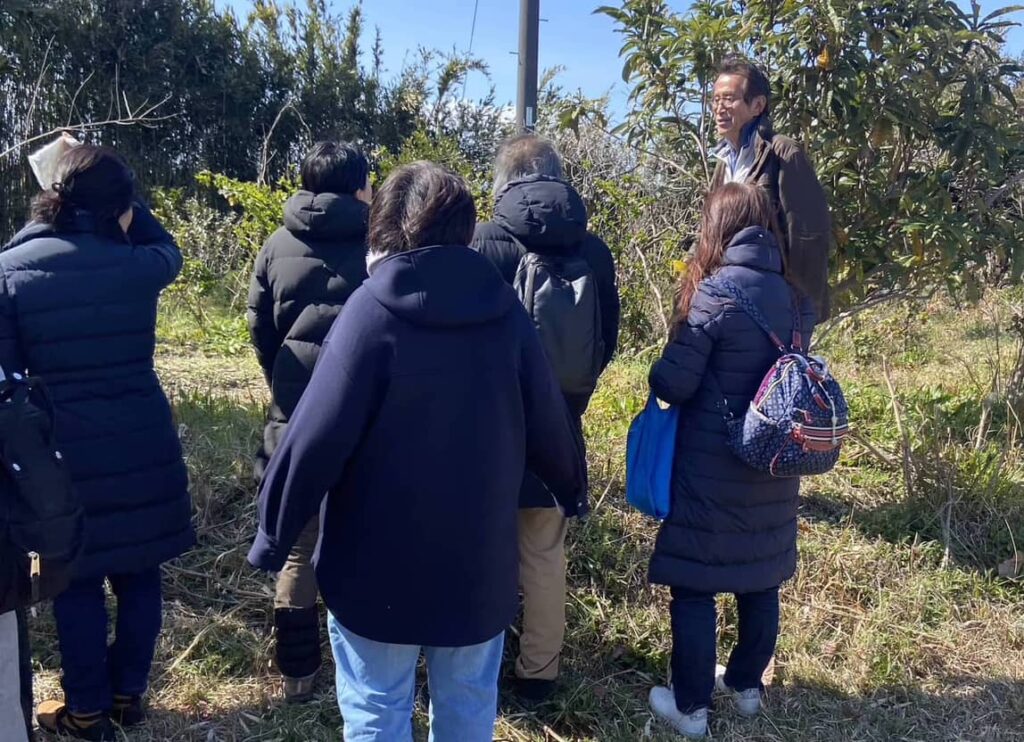
The following is an excerpt from the materials we received that day.
During the workshop, what left a strong impression on me was the discussion about cabbage.
One remarkable aspect of cabbage grown through Synecoculture is that, despite having the same appearance and size, their weights differ. This is because there are no gaps between the cabbage leaves. Plants require animal energy, and there is no concept of eliminating caterpillars as they provide essential animal energy for cabbage. Since there are no gaps between the multiple layers of cabbage leaves, even if a caterpillar eats only the outermost layer, the second and third layers below remain intact.
If one could observe the cells, they would anticipate that it is entirely different from ordinary cabbage (my interpretation). Complete cells are finely, densely, and regularly arranged. Therefore, they are heavier and naturally possess higher energy.
If you have a “multi-species, dense, mixed population,” you have an “ecosystem” without exception, and 90% of the annual labor hours in kyousei nouhou, Synecoculture can be concentrated on harvesting and selling the product every day of the year. All the work and expense required by humans is inherently unnecessary in nature, so why not take advantage of that wonderful physical mechanism?
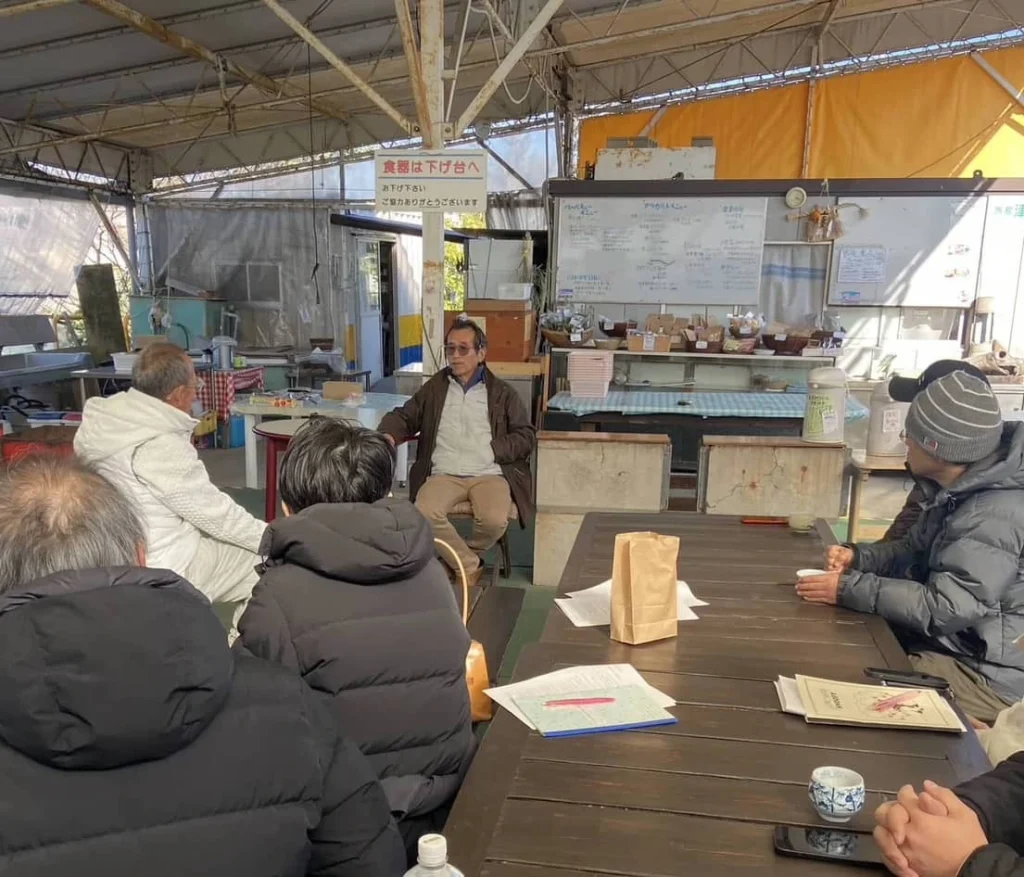
I was told that any seeds or seedlings would be fine.
This was a surprising answer, as I had naturally wanted to avoid first generation seeds such as F1 seeds. Every seed has its own life force. After germination, it grows up to about 10 centimeters by its own vital force, and after that, it is greatly affected by the surrounding environment.
It is the role of humans to provide the environment in which plants can grow. If the ecological environment can be maintained with a dense, multispecies mixture, plants are originally designed to grow well. There is no need for excessive human intervention.
The grass protects the roots of the trees, and the trees protect the grass.
Just as in the wilds where trees and grass grow together densely, the method of Synecoculture, which involves intercropping fruit trees and useful trees with vegetables and useful plants, applies the theory of life energy.
When it rains, the energy of water collected on the leaves of trees flows down to the ground through the leaves. Microorganisms also exist on the leaves of trees, and along with their energy, it is transmitted to the vegetables beneath the trees. Then, the vegetables that receive this energy also reciprocate the energy of microorganisms for mutual growth.
Birds that come to perch on trees also join in the ecosystem of this space.
The droppings of birds are adequately deposited into the soil as animal energy. By eating the fruits of fruit trees, they carry and drop the seeds as they fly, thus contributing to the ground.
In this way, a diverse range of life gathers through mixed planting, initiating the circulation of energy. Trees are the most evolved organisms among plants. Annual plants evolve into perennial plants, and perennial plants evolve into trees, all the while growing as they seek out energy.
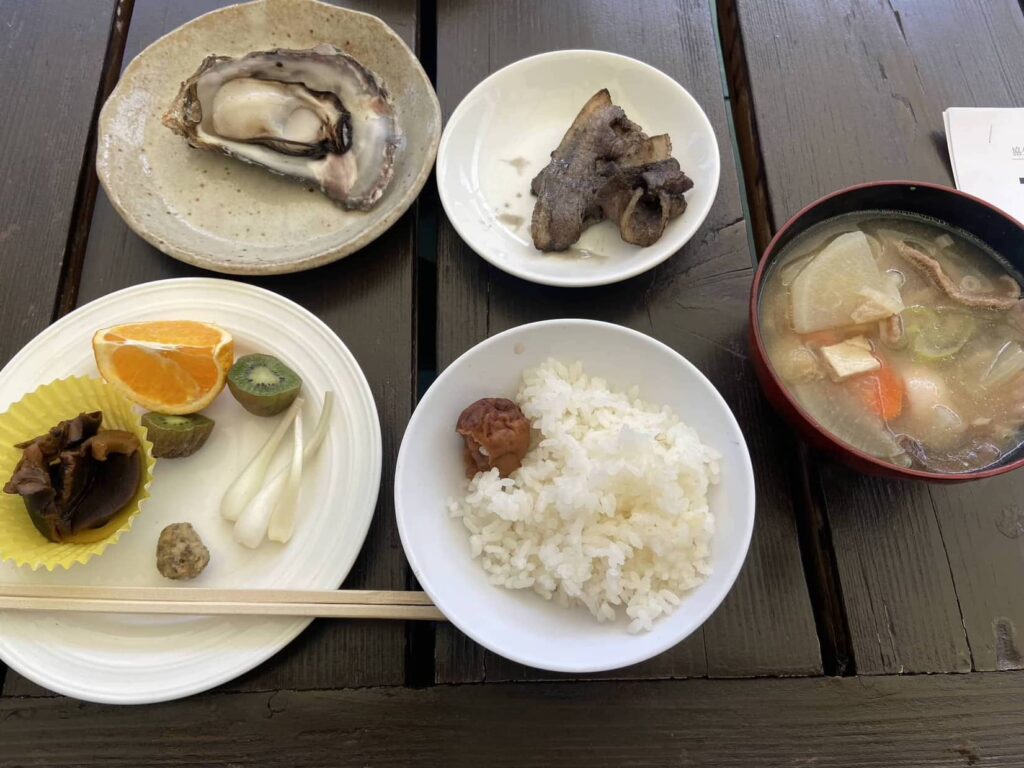
I learned that microorganisms, plants, and animals, all invisible to the human eye, live in cooperation with each other. Although he did not describe it as a circulation of life energy, I could see how they are cooperating and living together, exchanging energy with each other, not in the form of matter.
Energy is invisible to the eye. Of course, we cannot see the life energy of living creatures either. However, life energy definitely exists. Without life energy, we would not be able to live.
Humans are living creatures, so we are no exception.
We humans, who feel comfortable living far from nature, cannot survive without the life energy of plants and animals.
Yet, we live with an indifferent face even though we destroy the ecosystem, saying that weeds are troublesome, insects are bad, and we should kill them all without even noticing the existence of invisible microorganisms.
Is it really acceptable for humans, who stand at the top of all living things, to live as we do?
Plants also have consciousness. When given a choice between plastic and plant supports, climbing plants are said to choose the plant support over the plastic one to grow on. It’s also said that certain pumpkins grow straight vines towards distant trees.
Even though they don’t have brains like humans do, they still have consciousness. Nothing without consciousness exists in this world, extending to minerals, plants, and animals alike.
Consciousness is also referred to as life energy.
On this Earth, and in the universe, there is only one consciousness. While it’s common to say ‘my consciousness’ and ‘that person’s consciousness’ are different, it’s only human ego that creates such individual consciousness. In reality, there is only the true self, one life energy.
With only one life energy, it’s natural to live cooperatively. Moreover, the mechanism of life, which is meant to be cooperative, is inherently perfect, but it’s our human ego that distorts it.
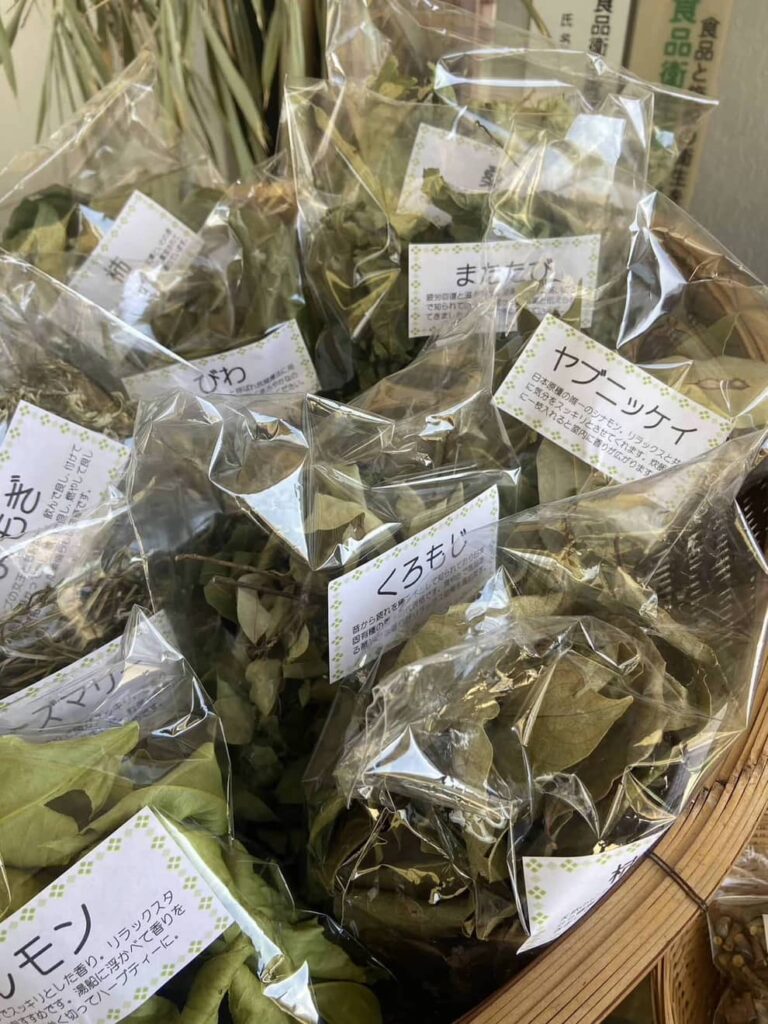
I have learned about the mechanisms of illness and the theories of recovery, realizing that they apply not only to humans but to everything.
I am considering starting with a home garden, practicing while observing life. Through plants, I want to deepen my understanding of what life is, starting from the life energy behind them.
If we humans do not realize what life is,
it is evident that if the natural environment continues to deteriorate and the ecosystem continues to collapse, humans at the top of the hierarchy will naturally become unable to survive.
Finally,
I have encountered the concept of Synecoculture for less than three months. Despite researching and watching videos about Synecoculture, I have come across explanations of Synecoculture where various foreign substances are introduced into the soil, contradicting the method of not introducing foreign substances that goes against the natural order.
While I have attended workshops, my own interpretations are just that—my own, and there are many possibilities for interpretation.
I encourage you to read “the wild man essays” and attend the workshop if you are interested in learning more. I also strongly recommend that you learn more from the several books that are scheduled to be published this year.